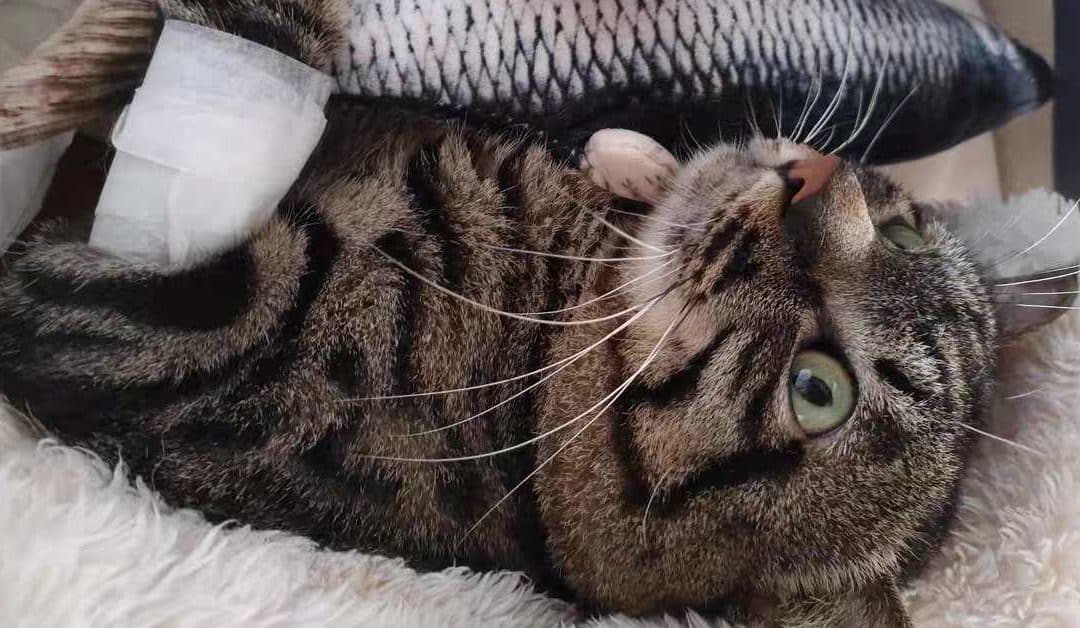
by Dr. Faith Whitehead | Nov 11, 2022 | Cat Cancer & Tumors, Dog Cancer & Tumors, Food & Health, Medicines & Therapies, Pet Story, Research and News
Euthanasia is the humane process of ending an animal’s life in order to relieve pain and suffering. The decision to euthanize a pet is a difficult one, but sometimes it is the most humane option. If you are considering euthanasia for your pet, it is important to consult with your veterinarian to discuss all of your options and to make sure that you are making the best decision for your pet. Veterinarians may perform euthanasia on pets for a variety of reasons. The most common reason is when a pet is suffering from a terminal illness and the owner does not want the pet to continue to suffer. Other reasons for euthanasia include when a pet is aggressive and poses a danger to others, when a pet is severely injured and cannot be healed, or when an owner can no longer afford to care for the pet.
There are a number of procedures that can be used for euthanasia in pets, and the support given will depend on the individual pet and owner. Some common procedures include injecting a lethal dose of an anesthetic agent, such as euthanasia solution, into the vein or muscle; asphyxiation using carbon dioxide; or administration of a high dose of barbiturates. The owner may be present during the procedure, and the pet will usually be placed on a table or in a quiet room to minimize stress. After the pet is euthanized, the body will be removed and the owner may be given time to say goodbye.
The pros of going forward with euthanasia in pets is that it can provide a peaceful death for a pet that is suffering from a terminal illness or has a poor quality of life. It can also spare the pet’s owner from having to witness the pet’s decline and suffering. The cons of going forward with euthanasia in pets is that it is a permanent solution and can be emotionally devastating for the pet’s owner. Some people may feel that euthanasia is a good idea in certain situations, such as when a pet is suffering from a terminal illness and is in pain, while others may believe that it is never acceptable to end a pet’s life. Ultimately, the decision of whether or not to euthanize a pet is a personal one that should be made by the pet’s owner in consultation with a veterinarian.
There are a few things to keep in mind when considering euthanasia for a pet. First, make sure that you have a good reason for doing so. Euthanasia should only be considered when a pet is suffering from a terminal illness or is in pain that cannot be alleviated. Second, be sure to consult with a veterinarian before making a decision. They will be able to advise you on whether or not euthanasia is the best option for your pet. Finally, be prepared for the emotional fallout that comes with euthanasia. This is a difficult decision to make, and it is important to be prepared for the grief that comes afterwards.

by Dr. Faith Whitehead | Nov 11, 2022 | Cat Cancer & Tumors, Dog Cancer & Tumors, Medicines & Therapies, Research and News
Drugs are an important part of treating dog tumors and cancers. Without drugs, many treatments would not be possible. Drugs are used to treat the tumor directly, as well as to treat side effects of treatments. Antibiotics are used to treat infections, and anti-nausea drugs are used to prevent and treat nausea and vomiting. Pain medications are used to control pain, and anti-inflammatory drugs are used to reduce inflammation. Many treatments are only possible using drugs. This includes chemotherapy, radiation therapy, and immunotherapy. These are treatments that are only available using drugs. There are other treatments available using drugs as well. This includes hormone therapy, targeted therapy, and biologic therapy. These therapies can be used in conjunction with other treatments to provide the most effective treatment possible.
There are a number of drugs that are effective in treating dog tumors and cancers. The most common are chemotherapy drugs, which work by killing cancer cells. Other drugs that may be used include radiation therapy, immunotherapy, and targeted therapy. Chemotherapy is the most common treatment for dog tumors and cancers. Chemotherapy drugs work by killing cancer cells. The most common chemotherapy drugs used to treat dog tumors and cancers are carboplatin, doxorubicin, and vincristine. Carboplatin is a platinum-based chemotherapy drug that works by interfering with the cancer cells’ ability to divide. Doxorubicin is an anthracycline chemotherapy drug that works by intercalating DNA and inhibiting topoisomerase II. Vincristine is a vinca alkaloid chemotherapy drug that works by binding to tubulin and inhibiting microtubule assembly. Radiation therapy is another treatment option for dog tumors and cancers. Radiation therapy works by damaging the DNA of cancer cells, which prevents them from dividing. The most common type of radiation therapy used to treat dog tumors and cancers is external beam radiation therapy. External beam radiation therapy is a type of radiation therapy that uses a machine to direct high-energy beams at cancer cells. There are two types of external beam radiation therapy: 1. Photon therapy: Photon therapy uses high-energy X-rays to kill cancer cells. 2. Proton therapy: Proton therapy uses beams of high-energy protons to kill cancer cells. Proton therapy is newer and may have fewer side effects than photon therapy.
Chemotherapy is a type of drug treatment that uses chemicals to kill cancer cells. Chemotherapy can be given intravenously (through a vein) or orally (by mouth). Chemotherapy is often used in combination with other treatments, such as surgery or radiation therapy. Chemotherapy is usually given in cycles, with each cycle consisting of a period of treatment followed by a period of rest. Chemotherapy is often associated with side effects, such as hair loss, nausea and vomiting, and fatigue. Radiation therapy is a type of therapy that uses high-energy x-rays or other particles to destroy cancer cells. Radiation therapy can be given externally, by aiming the radiation at the cancer from outside the body, or internally, by placing a radioactive substance in or near the cancer. Radiation therapy is often used in combination with other treatments, such as surgery or chemotherapy. Radiation therapy is often associated with side effects, such as fatigue, skin irritation, and diarrhea. Targeted therapy is a type of drug treatment that targets specific molecules involved in the growth and spread of cancer cells. Targeted therapy is often used in combination with other treatments, such as surgery or chemotherapy. Targeted therapy is often associated with side effects, such as fatigue, skin irritation, and diarrhea.
Immunotherapy is a type of drug treatment that uses the body’s immune system to destroy cancer cells. Immunotherapy can be given intravenously (through a vein) or by injection. Immunotherapy is often used in combination with other treatments, such as surgery, radiation therapy, or chemotherapy. For immunotherapy to be effective, cancer cells must have certain proteins on their surface. It is also important to know whether these proteins are present on the cells before starting immunotherapy. There are several types of immunotherapy, including: Monoclonal antibodies: Monoclonal antibodies are made in the laboratory to attach themselves to specific proteins on cancer cells. Once the antibody attaches to the cancer cell, it may help the body kill the cell. Monoclonal antibodies can be used alone or with other treatments. Monoclonal antibodies are made in the laboratory to attach themselves to specific proteins on cancer cells. Once the antibody attaches to the cancer cell, it may help the body kill the cell. Monoclonal antibodies can be used alone or with other treatments. T-cell transfer therapy: T-cell transfer therapy is a type of immunotherapy that uses T cells (white blood cells that fight infection) to help the body kill cancer cells. In this therapy, white blood cells are removed from the patient and sent to the laboratory. In the laboratory, the cells are changed to recognize and kill cancer cells.
About the author: Dr. Faith Whitehead; is a licensed veterinarian and researcher.

by Dr. Faith Whitehead | Nov 11, 2022 | Cat Cancer & Tumors, Dog Cancer & Tumors, Medicines & Therapies, pet Chinese herbal medicine, Research and News
Some people may have had positive experiences working with Chinese veterinarians and find them to be trustworthy, while others may have had negative experiences or heard negative things from others and therefore do not trust them. Some people may believe that Chinese veterinarians are not as qualified as veterinarians from other countries, while others may believe that they are just as qualified. Some people may think that Chinese veterinarians are more likely to use traditional Chinese medicine (TCM) treatments, while others may think that they are just as likely to use western medicine treatments. Some people may think that Chinese veterinarians are more affordable than veterinarians from other countries, while others may think that they are just as expensive.
The Chinese have a long and proud tradition of veterinary medicine. For thousands of years, the Chinese have been using their knowledge of animal anatomy and physiology to treat a wide variety of animal diseases. Today, Chinese veterinarians are among the most highly trained and experienced in the world. They are able to provide expert care for a wide range of animals, from domestic pets to livestock. In addition, they are also skilled in the latest diagnostic and treatment techniques. As a result, Chinese veterinarians are able to provide outstanding care for their patients. The Chinese veterinarians have demonstrated outstanding capabilities in the treatment of a wide variety of animal diseases, ranging from infectious diseases to cancer. They have also shown great skill in the surgical treatment of animals. In addition, they have developed a number of innovative techniques for the care and treatment of animals.
In the Chinese society, veterinarians are seen as very reliable and frequently, doctors ‘ beliefs are considered the most valuable. They are perceived as extremely intelligent, principled, ethical and possessing limited knowledge. Elders may feel comfortable deferring to doctors yet at the beliefs of their kids. Thus, identifying the healthcare proxy would be seen as insignificant to some Chinese elders. Agreement among family members is respected, and the judgment of this physician will change and point end-of-life discussions, while the thought of the healthcare proxy, or ‘ sole advocate, ‘ may be seen as a barrier to the decision-making process. Veterinarians play a leading part in the well-being of our community by caring for animals and by utilizing their expertise and training to assist and improve human health, too.
In “Dogs in China: An Investigation into Pet Markets, Animal Welfare, Cross-border Trade and Quarantine,” report authors Emma Hockridge and Peter J. Li wrote, “The Chinese food and drug regulator, the Food and Drug Administration (CFDA), is responsible for monitoring the quality of veterinary drugs, and the Ministry of Agriculture (MOA) is responsible for the supervision of the use of veterinary drugs.” China’s veterinary profession has been growing in recent years. According to the China Veterinary Association, the number of practicing veterinarians has increased from about 50,000 in 1998 to more than 100,000 in 2013. According to the China Veterinary Association, the number of practicing veterinarians has increased from about 50,000 in 1998 to more than 100,000 in 2013. The veterinarians are also very professional. They know what to do and how to treat the animals. They also have the necessary supplies to treat the animals. All the veterinarians in China are highly qualified.
About the author: Dr. Faith Whitehead; is a licensed veterinarian and researcher.



